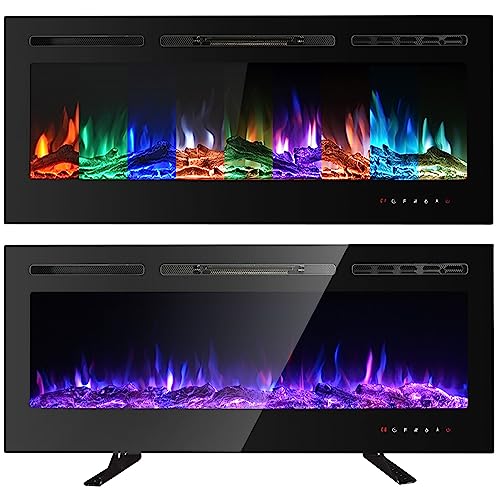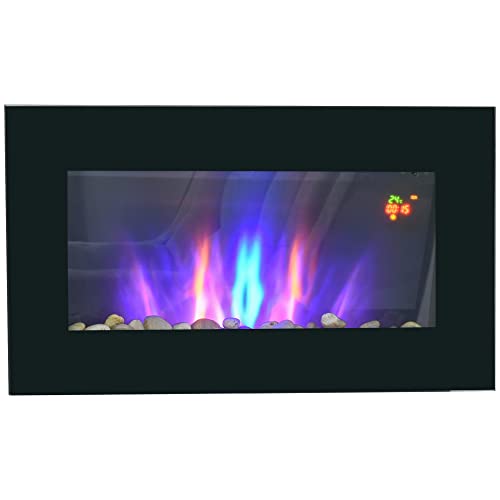Guide To Small Wood Burning Stove: The Intermediate Guide On Small Woo…
작성일 25-01-31 14:54
페이지 정보
작성자Terri 조회 20회 댓글 0건본문
 Installing the Very Small Wood Burning Stove
Installing the Very Small Wood Burning Stovemodern wood burning stove stoves are being installed more and more in homes that are smaller and more efficient in insulation. These spaces are perfect for the smallest wood-burning stoves. They offer significant health benefits.
These stoves are also perfect for yurts. They can be used in caravans, shepherd huts and small wood burning stove sheds. However, it is important to remember that you need to keep a safe distance from the stove and any combustible materials.
How do you set up a small wooden stove
Wood-burning stoves can be a fantastic method of heating a small house without racking up your energy costs or relying on petroleum. However, the process of installing the stove can be daunting. To ensure that your stove is set up safely and in a safe manner, you must follow a series of important steps. Be sure to have all the necessary tools and follow the guidelines of the manufacturer before you begin. It's also recommended to speak with an expert who is certified.
The first step is to prepare the area in which the stove installation will be installed. This includes removing combustible materials and preparing the hearth's foundation. You can then construct the hearth and then install the stove. A hearth is an inflammable, fire-proof layer that safeguards your flooring beneath the stove. It also provides an solid foundation for the heating tubes made of metal which carry smoke and odors out of the house.
You can either use a pre-made hearth pad or create one from scratch. The pad should be constructed from concrete or fire-resistant tiles. The pad must be secured to the floor with high-temperature concrete, which is available at home improvement stores. Make sure that the hearth is centered above the stove, and also that it is in compliance with the requirements for side clearance.
Next, you will need to decide which type of chimney pipe to use. You can select between single wall or double wall black stove pipe(opens in new tab). The decision will be dependent on the distance between your stove and combustible material. The distance you should choose to use is in accordance with the guidelines of the manufacturer and the local building code.
If you cannot locate your stove within the recommended distance, you may install a heat shield to reduce the required clearance. It is recommended to check with your local fire department and insurance company to see whether this is permitted.
Another option is to install an fan that blasts the hot air out of the room. This helps the stove heat the room more evenly. You can then move your furniture closer to the fire and relax in the warmth of a fireplace. Be sure to burn only dry and seasoned wood in your stove. The ash produced by burning wood could be harmful to your family if you don't.
Space requirements
Wood stoves are a popular choice for a lot of people, but they have to be understood in terms of the amount of space they require. The amount of space you'll require around your stove will depend on the size of the space and the power output of your stove. If you do not have enough space to accommodate the stove, you may have to think about a different heating source.
The dimensions of a small wood burning stove can vary depending on the manufacturer, but generally speaking, you must leave at least two feet (60 centimeters) between the stove and any combustible materials. You should also think about combustible ceilings and walls. Also, you should check with your insurer to find out what requirements they have for the stove.
You can cut down on the space required for a small wood burning stove by utilizing an exhaust system that comes with an insulated flue tube. This will decrease the amount of space you'll need to leave around the stove, and it will also help prevent smoke from entering the room. Be sure to read the guidelines of the manufacturer before choosing a venting solution for your small large wood burning stove burning stove.
You can also put in heat shields to decrease the distance required between your stove and the combustible surfaces. These shields are typically available from the manufacturer of your stove and they can be fitted to the sides or back of your wood burner stove. Additionally, you could also use double wall flue pipes to cut down on the space you have to leave between your stove and any combustible material.
A good alternative for a small wood stove is to use the fireback made of metal. It can be found at your local hardware store. It's a great method of protecting your walls from the damage caused by fire. Additionally, a fireback can keep hot embers from falling on your furniture or floor and help to eliminate the need for chimney caps.
A small wood burning stove (https://telegra.ph) is a great option for smaller homes and apartments. This type of stove provides efficient heating at a lower cost than other options. Wood is also a renewable resource and is readily accessible locally.
Flue system
Flue systems function as a conduit, safely guiding smoke and gasses from the stove out of your home. Without a flue, these gases could build up in the room and pose an health risk. They can also cause an unsafe draft.
It is important to select a flue system that is compatible with the stove's dimensions and power output. The flue pipe should be at least 25% larger than the stove's to allow for adequate draft and smoke passage. It is also crucial that the flue system is properly and properly insulated. A properly insulated flue pipe prevents heat loss and keeps the temperature inside the stove at a lower level, improving efficiency.
When choosing the flue system you should also think about the location of your wood stove. If your stove will be located in a mobile home or caravan, it is best to choose a system that is easily removed for when the unit is moved. If you intend to install your stove in a permanent residence it is recommended to choose an internal system. In this case, the flue pipe will be run through the ceiling and wall of your house. You can also install an external twin wall flue system. These systems are simple to install and cause less disruption in your home.
It is not recommended to put an already-built chimney on your small wood-burning stove. This is costly and can be extremely risky if it is not done correctly. Installing a flexible flue liner is a better option. These are available in different sizes and grades and can be cut according to the size of your stove. The grade of the flue liner that you select for your stove will determine how the gases and smoke are carried through the chimney.
When fitting an air-tight flue system, it is crucial to adhere to UK building regulations. These regulations specify specific requirements, like the distance between combustibles and the flue system, the route of the flue and the size of the hearth. Additionally, it is important to install carbon monoxide detectors in the area in which the stove will be installed. This device will alert you when it detects high levels of this smellless, poisonous gas.
Safety precautions
Wood stoves are popular ways to heat your home however if they're not installed or used properly they could ignite and cause fires. Wood stoves that are not installed and operated according to the manufacturer's instructions cause over 4000 fires within homes each year. Fortunately, these fires can be prevented by taking simple safety precautions. These measures include proper venting, avoiding burning garbage and paper on the stove, and keeping pets and children away from the wood stove or fireplace.
A wood stove should be vented through a steel chimney that is at least one meter above the roof of the house. It should not be connected to a flue used by a different appliance, like a boiler or furnace, which could cause toxic carbon monoxide gas to leak into your home. The chimney should be inspected regularly to avoid creosote and other hazardous conditions.
The stove should be placed at least three meters from walls and furniture to avoid the buildup of heat and smoke in these areas. The stove should also be placed on a noncombustible surface. A professional mason should examine the chimney and wood stove on a regular basis to make sure that the chimney is free of obstructions.
It is important to use only seasoned, dry wood for the wood stove. Green or wet wood is more difficult to burn, which causes inefficient combustion and produces large wood burner volumes of smoke. Furthermore it can cause the room fill with poisonous chemicals and trigger smoke inhalation.
It is essential to only add just a few pieces at a time of dry, seasoned dry wood when you are starting an fire. Placing too much wood in the stove could result in overheating and can cause an explosion in the chimney. Paper and trash shouldn't be burned in wood stoves because they release toxic fumes.
It is a good idea to test a stove's operation before each winter. Burn two or three small pieces seasoned wood for a short time. This will reveal any creosote or obstructions that could have gathered up in the chimney.

댓글목록
등록된 댓글이 없습니다.